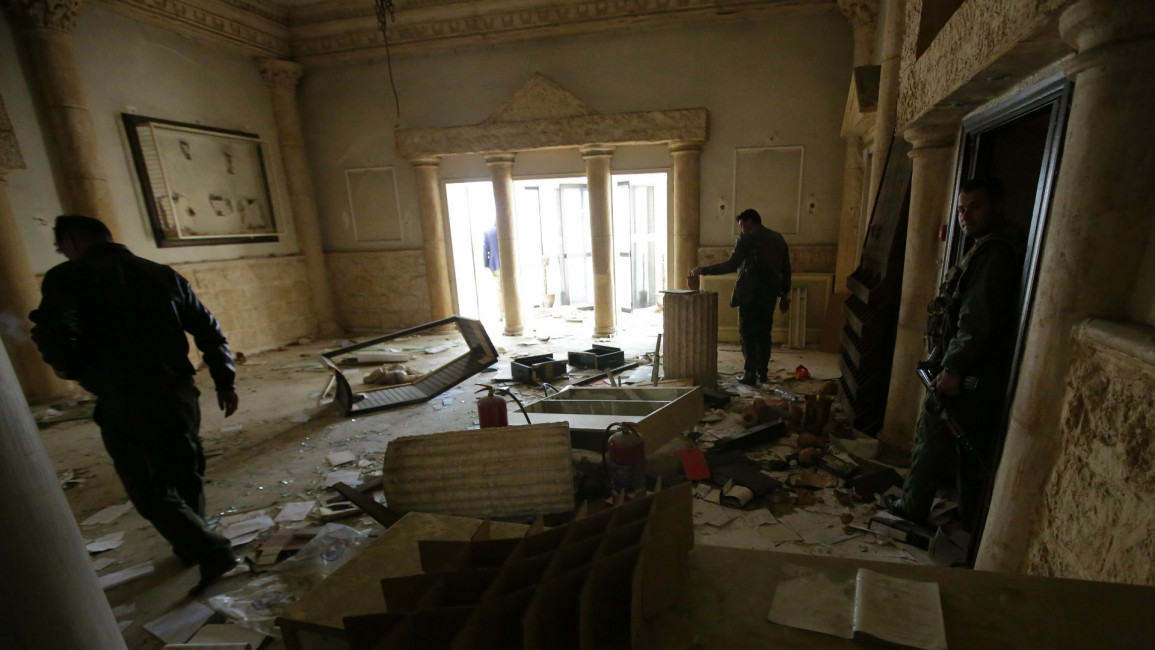
Palmyra: when the world stopped and noticed
The black banner of the Islamic State group now flutters over the medieval Arab castle in Palymra that stands sentinel over a vast field of ruins that is Syria's most prized Unesco World Heritage site.
No doubt the Islamic State group will soon start to levy its usual 20 percent tax on the artefacts dug from the unexcavated areas on its fringes. Meanwhile the world holds its breath to see if the IS destroys the site.
Four centuries before the advent of Islam, this historic oasis city had also grown wealthy from the taxes it levied on merchants travelling along the Silk Road.
Beauty and horror
The highest taxes, according to the famous bilingual Greek-Aramaic "Palmyra tariff' stone" - carried off to St Petersburg's Hermitage Museum by a Russian aristocrat in 1901 - were due on perfumes, dried fish, olive oil, water and prostitutes. Hundreds of statues of prominent citizens used to grace the columns of the market place, but these too have long since been moved to other museums.
Only a handful of the carved stone blocks left in situ in Palmyra depict people or creatures. Ironically one of them shows the world's earliest representation of veiled women, an example of how many practices now considered Islamic were often traceable to pagan times.
It would make no sense to destroy such stones. When the early caliphs - who IS claim to follow - drove north from the Arabian Peninsula with their armies after the death of the Prophet Mohammed, they did not seek to ban or wipe out the multicultural heritage of the lands they conquered.
As borders fell, they unified the region and encouraged a cross-fertilisation of ideas and artistic traditions.
Commerce, ever the driver of human interaction, thrived as new trade routes evolved, while religious and cultural trends co-existed.
| Thanks to IS, Palmyra is now 'hot' news, as is the bald ibis. |
When it comes to the case of Palmyra, this rich cultural legacy is especially clear, with the blending of styles as Rome encountered the Orient. Many of the carved stone blocks carry motifs of flowers, including the famous Palmyrene Rose, ringed with Mediterranean acanthus and Egyptian lotus leaves, motifs which were borrowed by British artists like William Morris of the arts and crafts movement.
IS' capture of Palmyra has captured the world's attention, much like the epic scenes of Yazidis fleeing up Mount Sinjar did last summer. Almost all media outlets have poured out articles eulogising the ruins, with handwringing about their potential destruction.
No matter that Assad regime forces in 2013 caused extensive damage to the site by shelling a rebel encampment inside the magnificent 1st century Temple of Bel. Such destruction went unremarked except by specialist sites who have been documenting damage to Syrian cultural heritage since 2011.
Destruction of heritage
Videos obtained by the Association for the Protection of Syrian Archaeology showed holes in the southern and eastern walls of the temple and the total collapse of two columns in its southern portico.
Further videos revealed Assad regime military trucks and tanks situated in the main archaeological site, their rocket launcher in the 3rd century camp of Diocletian. Assad soldiers were seen posing with looted statue busts and the international community did not murmur a word.
Now the world's attention has been commanded by the possible extinction of the bald ibis following IS' capture of Palmyra. No matter that when the nearby Talila Reserve was attacked by rebels in 2013, who vandalised the huts and fences, and barbecued the endangered gazelle and oryx. Again, the world's media was silent.
A Syrian enviromentalist told me that after the 2013 attack the wardens fled with the endangered birds including the bald ibis to the reserve headquarters in Palmyra, where the birds were kept in such terrible conditions that they later died anyway. The world did not notice.
Thanks to IS, Palmyra is now "hot news", as is the bald ibis. Now even the regime's notorious Tadmur prison, where the most horrific methods of torture were used, is being publicised.
Best of all, thanks to these recent stories in Palymra, the world's attention has finally been focused on the chaos deep inside Syria where IS thrives like a virus.
May the world's attention remain focused long enough to understand that the anarchy in Syria will grow beyond anyone's ability to stop it. A solution is urgently needed, and Palmyra may be the best catalyst for change.
Opinions expressed in this article remain those of the author and do not necessarily reflect those of al-Araby al-Jadeed, its editorial board or staff.



